Frederiksborg Castle is a magnificent structure in Hillerød, Denmark, and it is a prime example of the grandeur of Nordic architecture and the richness of its history. Originating from the early 1600s, this Renaissance masterpiece was the brainchild of King Christian IV. His vision was to create a symbol of power and prestige that would resonate throughout Europe. The castle is not only an architectural marvel but also a cultural treasure trove, housing the National Museum of History since 1878.
The Founding Years (1560-1620)
The story of Frederiksborg Castle is one of visionary ambition and architectural transformation. Its history started in 1560, when Frederik II, with a keen eye for potential, acquired the Hillerødsholm estate. Initially, the estate was home to a modest structure, yet it was poised for greatness under the stewardship of Frederik’s son, Christian IV. Christian IV, a king known for his architectural enthusiasm and grandiose ambitions, envisaged a structure that would not only be a royal residence but also a symbol of the strength and sophistication of the Danish monarchy.
Between 1600 and 1620, Christian IV embarked on an ambitious project to rebuild the existing structure. He envisioned a Renaissance castle that would reflect the cultural and artistic revival sweeping across Europe. This period was marked by a resurgence of classical learning and a newfound appreciation for art and architecture. Christian IV sought to embed these Renaissance ideals into the very stones of Frederiksborg Castle.
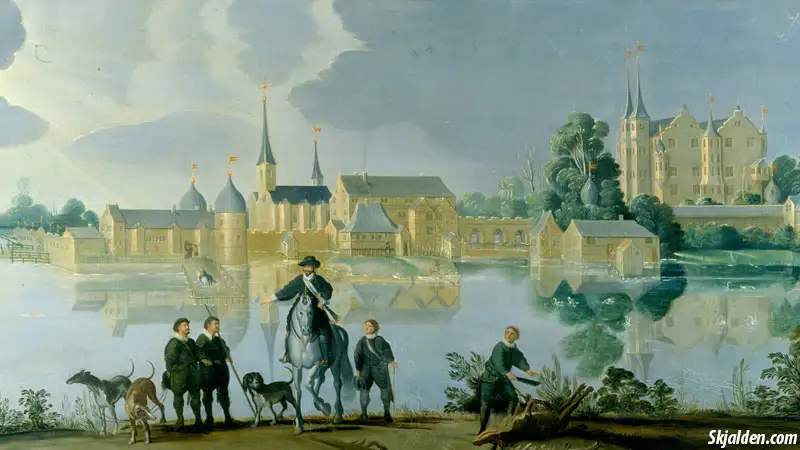
The castle’s reconstruction was not just an act of royal whim but a carefully orchestrated project. Christian IV was deeply involved in the design and construction process. His choice to reside in an Italian-inspired villa, located strategically across the lake, was more than a matter of convenience. It was a statement of his commitment to the project. From this vantage point, he could oversee the construction, ensuring that every detail aligned with his grand vision.
This period was also marked by an increasing interaction between Denmark and the broader European continent. Christian IV’s architectural vision for Frederiksborg Castle was influenced by the styles and trends he observed in other European countries. The castle’s design incorporated elements of Italian and Dutch Renaissance architecture, blending them into a distinct style that was uniquely Danish. This approach mirrored the broader cultural and artistic exchanges of the era, positioning Denmark as a significant player in the European Renaissance movement.
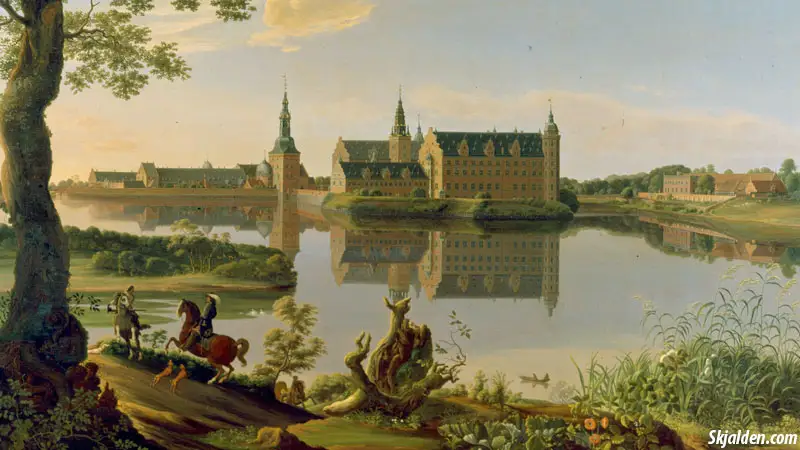
The construction of Frederiksborg Castle during these years was more than just a building project; it was an assertion of Denmark’s cultural and political stature. Every stone, window, and artwork in the castle was carefully chosen to reflect the wealth, power, and artistic sensibility of the Danish monarchy. The castle was designed not just as a home for the king but as a showcase of the kingdom’s prosperity and sophistication.
The decision to replace the original structure with a Renaissance castle also reflected a shift in royal tastes and the evolving role of royal residences. While medieval castles were primarily defensive structures, Renaissance palaces like Frederiksborg were intended as luxurious homes and centers of court life. They were designed to impress and entertain, filled with art and opulence, and Frederiksborg Castle was no exception.
A Period of Change (1700-1859)
By 1700, the castle had already undergone several modifications, reflecting the changing needs and tastes of its royal inhabitants. These changes were not just cosmetic; they symbolized the castle’s ongoing evolution, mirroring the shifting tides of Danish history.
One of the most significant transformations occurred in 1720, when Christian IV’s villa, once a symbol of the king’s direct involvement in the castle’s construction, was dismantled. In its place, a stunning Baroque garden was created. This garden was more than just a landscaping project; it was an embodiment of the era’s artistic trends. Baroque gardens were designed to showcase the power, control, and wealth of their owners, and Frederiksborg’s new garden was a symbol to these ideals. With its precise geometric shapes, orderly pathways, and elaborate sculptures, the garden was a visual representation of the monarchy’s influence and sophistication.
As the 18th century progressed, Frederiksborg Castle itself saw a series of renovations, particularly in the 1730s. These renovations were not simply about maintaining the structure but were reflective of the evolving architectural styles and the need to modernize the living spaces for comfort and functionality. Despite these changes, by the end of the 18th century, Frederiksborg Castle ceased to function as a primary royal residence. This shift marked a new era in the castle’s history, transitioning from a symbol of royal power to a cultural and historical repository.
The castle’s transition was further solidified when it became the home of the royal portrait collection. This collection was more than an assemblage of art; it was a visual chronicle of Denmark’s royal lineage and history. Housing these portraits at Frederiksborg symbolized the castle’s continuing connection to the monarchy, even as its role within the royal family changed.
The mid-19th century brought another wave of change when Frederik VII made Frederiksborg his residence. His tenure in the castle was marked by significant modernizations, reflecting the technological and cultural advancements of the time. These updates included the installation of modern heating systems, an emphasis on comfort and livability, and the integration of contemporary artistic tastes. Frederik VII’s efforts to refurbish and modernize the castle demonstrated a commitment to preserving its historical significance while adapting to contemporary needs.
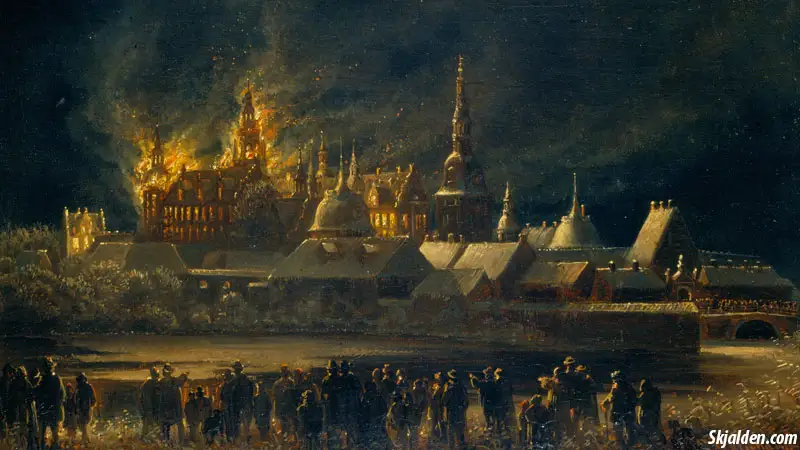
However, this period of renewal was abruptly disrupted by the fire of 1859, a calamity that caused extensive damage to the castle. The fire spared only the church and the Audience Chamber, but it was a turning point in the castle’s history. The devastation brought an outpouring of national support for restoration, reflecting the deep cultural and historical connection the Danish people felt with Frederiksborg Castle. The restoration efforts were not just about rebuilding; they were about preserving a national treasure.
This incident also marked a transition in the castle’s purpose. Post-restoration, Frederiksborg Castle emerged not heritage and resilience. The extensive damage caused by the fire necessitated a careful and thoughtful restoration process, one that respected the castle’s historical architecture while incorporating the necessities of modern preservation techniques. This process was a expression to the castle’s enduring importance in Danish culture and history, a symbol of the nation’s ability to preserve its past, even in the face of adversity.
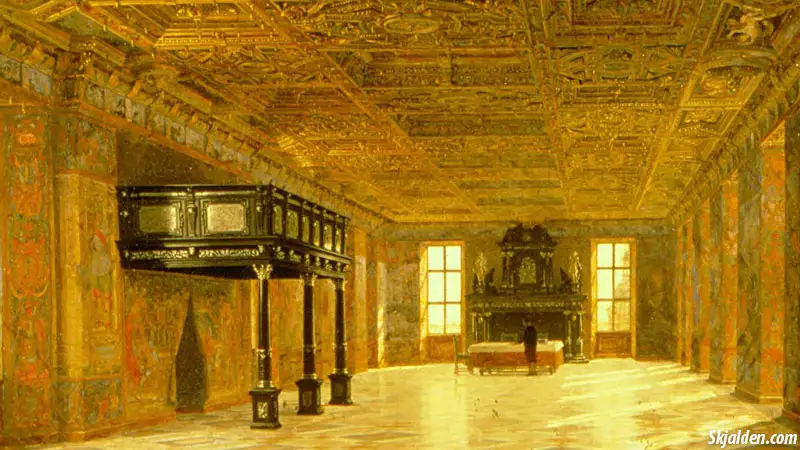
The restoration also allowed for a reimagining of the castle’s use. While it had served as a royal residence and housed the royal portrait collection, the post-fire era saw Frederiksborg Castle taking on a more public role. It became a venue where the public could connect with Denmark’s royal and cultural history in a more intimate and tangible way. This shift was significant in democratizing access to the nation’s heritage, making Frederiksborg Castle a shared cultural space for all Danes.
The recovery from the fire and the subsequent transformations ensured that Frederiksborg Castle continued to be a living part of Denmark’s story. It stood and continues to stand, as a bridge between the past and the present, a place where history is preserved and celebrated. The castle, with its restored beauty and renewed purpose, invites visitors to step into a world where history is alive, where the stories of kings and queens, architectural marvels, and artistic achievements, are not just relics of the past but vibrant chapters of the ongoing narrative of Denmark.
In this way, Frederiksborg Castle’s journey through the 18th and 19th centuries is a reflection of its resilience and adaptability. From a royal residence to a cultural icon, the castle’s evolution mirrors the broader changes in Danish society, serving as a reminder of the country’s rich heritage and its enduring legacy.
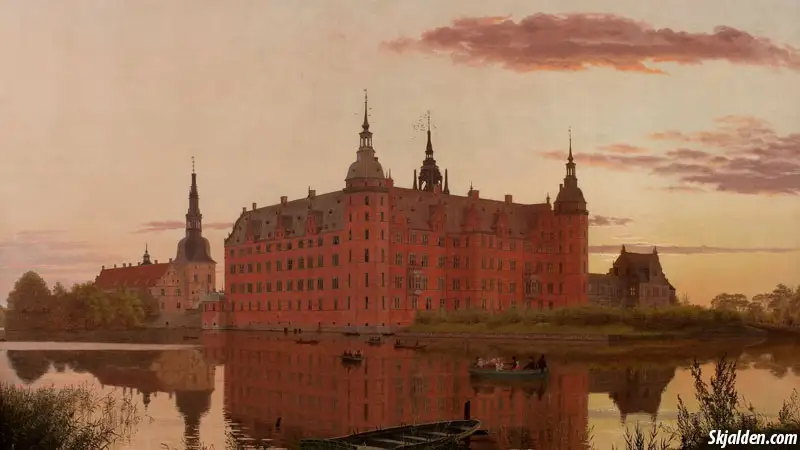
The Brewer’s Museum (1860-Present)
The transformation of Frederiksborg Castle into The Brewer’s Museum in the latter half of the 19th century marked a pivotal moment in its storied history. The post-fire era was not just about physical restoration; it represented a profound shift in the castle’s purpose and identity. The national effort to support the castle’s reconstruction through collections and a lottery was a symbol to its significance in the Danish collective consciousness. This period witnessed the castle transitioning from a royal residence to a beacon of national heritage.
The decision by the royal family to cease residing at Frederiksborg Castle was a meaningful change, symbolizing the end of an era. However, this departure opened the door for an innovative and visionary idea. J.C. Jacobsen, the founder of the renowned Carlsberg brewery, saw an opportunity to repurpose this architectural gem into a repository of Danish history. His proposal to establish a national history museum on the site was not just about preserving the past; it was about making history accessible and engaging for the public.
Since 1878, under the stewardship of the Carlsberg Foundation, Frederiksborg Castle has housed the National Museum of History. This museum has played a crucial role in documenting and showcasing Denmark’s past through its exhibits and collections. From royal portraits and historical artifacts to thematic exhibitions depicting various aspects of Danish life, the museum provides a comprehensive and immersive historical experience.
The Brewer’s Museum is more than just a display of artifacts; it’s a dynamic educational space where history is brought to life. The museum’s exhibitions are carefully curated to tell the stories of Denmark’s past in a way that is both informative and engaging. Interactive displays, educational programs, and special events offer visitors of all ages an opportunity to connect with history in a personal and meaningful way.
Furthermore, the museum plays a significant role in historical research and preservation. It’s a center for scholarly work, where historians, researchers, and curators collaborate to deepen our understanding of Danish history. The preservation efforts at the museum ensure that Denmark’s cultural heritage is safeguarded for future generations, making the castle a bridge between the past, present, and future.
In essence, The Brewer’s Museum at Frederiksborg Castle represents a successful fusion of historical preservation and public engagement. It is a symbol to the enduring relevance of historical sites in contemporary society, illustrating how they can be repurposed to serve educational and cultural needs. The transformation of Frederiksborg Castle into a national museum has ensured its continued significance in Danish life, making it a cherished landmark that continues to educate, inspire, and fascinate.
Frederiksborg Castle Church
The Frederiksborg Castle Church is much more than a place of worship; it’s a living museum that encapsulates the castle’s rich history and Denmark’s artistic heritage. Surviving the devastating fire of 1859 with much of its original structure and interior intact, the church stands as a resilient symbol of the past. Its walls and artifacts tell stories that go beyond religious significance, echoing centuries of Danish history and culture.
Central to the church’s awe-inspiring interior is the magnificent altar, a masterpiece crafted in 1606 by the renowned goldsmith Jacob Mores. This altar is not just a religious symbol; it’s a work of art that showcases the intricate craftsmanship and artistic sensibilities of the early 17th century. The detail and care put into its creation reflect the importance of religion and art in the lives of the Danish monarchy and society at that time.
Another treasure within the church is the historic Compenius organ, dating back to 1610. This organ is more than a musical instrument; it’s a piece of history that resonates with the sounds of centuries. The organ’s rich tones have filled the church for over 400 years, providing an auditory link to the past. The weekly concerts held on this organ allow visitors to experience the music as it would have sounded to their ears hundreds of years ago, creating a unique and immersive historical experience.
The church’s interior decoration, original from the era of Christian IV, adds another layer of historical significance. It showcases the artistic trends and preferences of the early 17th century, providing insights into the aesthetic values of the period. The decoration is not only beautiful but also serves as a visual history lesson, illustrating the evolution of religious art and architecture in Denmark.
In addition to its historical and artistic value, the Castle Church plays an important role in the local community. It serves as a venue for religious ceremonies, cultural events, and musical performances, bridging the gap between the past and the present. The church’s active role in the community ensures that it remains a living part of Frederiksborg Castle, not just a historical relic.
The Frederiksborg Castle Church, with its rich history, stunning artistry, and vibrant community role, offers a unique and multifaceted experience to its visitors. Whether you are interested in history, art, music, or architecture, the church has something to offer. It serves as a lasting symbol of Frederiksborg Castle’s enduring legacy, inviting visitors to not only view its treasures but to experience the continuity of history in a space that has been sacred for generations.
The Gardens of Frederiksborg
The Gardens of Frederiksborg Castle are not just an extension of its architectural beauty; they are a living, breathing part of its history. These gardens, originally envisioned by King Christian IV, embody a seamless fusion of nature’s charm and human creativity. When you stroll through these gardens, you’re walking on paths that royalty once treads and witnessing a landscape shaped by centuries of care and artistic vision.
In 1720, a significant transformation of the gardens took place. The king enlisted J. Krieger, a renowned landscape architect of the time, to redesign the gardens in the Baroque style. This style, known for its emphasis on symmetry and precision, brought a new level of elegance and order to the castle grounds. The gardens were laid out with geometric precision, featuring meticulously trimmed hedges and perfectly aligned flower beds, creating an ambiance of royal sophistication.
One of the most captivating aspects of these gardens is their evolution over time. In the 1990s, the gardens underwent a significant revival, breathing new life into this historic space. This restoration wasn’t just about bringing back the old charm; it was about adding new layers to the garden’s story. The revived garden includes intricate designs of royal monograms representing the four monarchs who had the most significant impact on the garden’s development: Frederik IV, Frederik V, Christian VI, and Margrethe II. These monograms, crafted with precision in the hedges, offer a unique way to connect with the castle’s past, providing a tangible link to the legacy of these rulers.
Visiting the Gardens of Frederiksborg, you’ll notice that they offer more than just aesthetic pleasure. They are a testament to the art of garden design and a reflection of the changing tastes and styles throughout Danish history. From the strictly formal Baroque layout to the later additions that reflect a more relaxed style, these gardens represent a timeline of horticultural fashion and royal preferences.
The gardens also play an educational role, illustrating the principles of Baroque garden design. Visitors can appreciate the careful planning that goes into creating symmetrical patterns, the skill in sculpting hedges, and the art of creating a landscape that complements the grandeur of the castle. This educational aspect adds significant value for visitors interested in gardening, landscaping, or historical architecture.
Moreover, the gardens serve as a serene escape from the hustle and bustle of modern life. The tranquility found in the neatly arranged flower beds, the gentle rustle of leaves in the manicured hedges, and the peaceful ambiance make it an ideal spot for reflection and relaxation.
The Military Academy and its Evolution
Frederiksborg Castle’s role in military education is not just a footnote in its history; it’s a significant chapter that speaks volumes about its versatility and importance in Danish heritage. Since the early 18th century, the castle has been at the forefront of military training in Denmark, beginning with the establishment of Landkadetakademiet in 1713. This institution marked the advent of formal military education in the country, setting a standard that has evolved and grown over the years.
Landkadetakademiet was more than just a military school; it represented a significant shift in how military officers were trained. Before its inception, military training was largely practical and based on field experience. The academy introduced a more structured, academic approach, combining theoretical knowledge with practical skills. This holistic method of education was revolutionary at the time and laid the foundation for a modern military education system.
As the years passed, the academy underwent numerous transformations, reflecting changes in military tactics, technology, and educational philosophies. The curriculum expanded, incorporating new subjects and training methods to keep pace with the evolving nature of warfare and military strategy. These changes ensured that the officers trained at Frederiksborg Castle were not just skilled in traditional combat but were also well-versed in various aspects of military leadership and strategy.
Today, Frederiksborg Castle houses the Royal Danish Military Academy, continuing this long-standing tradition of military excellence. The academy is more than a training ground for future officers; it’s a symbol of the enduring values of discipline, honor, and dedication that are essential to military service. The academy’s presence in the castle adds a layer of contemporary relevance to this historic site, bridging the past and present.
The Royal Danish Military Academy at Frederiksborg Castle is a source of national pride. It represents Denmark’s commitment to protecting and serving its people, as well as its dedication to maintaining a high standard of military leadership. The academy also serves as a reminder of the castle’s dynamic history – not just as a royal residence or a national museum, but as a pivotal site in the shaping of Denmark’s military heritage.
Visitors to Frederiksborg Castle can appreciate this unique aspect of its history. The presence of the military academy adds a sense of living history to the castle, making it more than just a relic of the past. It’s a place where one can witness the continuity of tradition and the evolution of military education over centuries.
Frederiksborg Castle Today: A Living Monument to Danish Heritage
Today, Frederiksborg Castle is much more than a historical landmark; it’s a dynamic and interactive hub that brings Danish history and culture to life. As a beacon of Denmark’s rich past, the castle serves multiple roles, each adding a layer of value for visitors and the community alike.
At its core, Frederiksborg Castle continues to function as a museum, but it’s a museum that breaks the mold. The castle doesn’t just display artifacts; it tells stories. Through its comprehensive exhibitions and thoughtfully designed displays, visitors are transported through various epochs of Danish history. These exhibits are not static; they are constantly evolving, incorporating the latest research and technology to make history accessible and engaging.
Beyond its role as a museum, Frederiksborg Castle is a vibrant center of cultural activities. The castle’s calendar is filled with a variety of events that cater to diverse interests. From historical reenactments that bring the past vividly to life, to art exhibitions that showcase both classical and contemporary works, the castle is a platform for a wide range of cultural expressions.
One of the most enriching experiences offered by the castle is its guided tours. These tours are more than just walks through historic halls; they are immersive journeys led by knowledgeable guides who share fascinating stories and lesser-known facts about the castle and its inhabitants. These tours offer visitors an opportunity to engage with the castle’s history on a deeper level, providing context and insights that go beyond what’s on display.
Moreover, Frederiksborg Castle functions as a vibrant workspace, fostering a creative and scholarly environment. Researchers, historians, and artists frequently use the castle as a source of inspiration and knowledge. This blend of academic research and creative exploration contributes to the ongoing story of the castle, ensuring that it remains relevant and vibrant.
The castle also plays an active role in the community. It’s a place where locals and visitors alike can experience the richness of Danish culture. Whether it’s a concert in the chapel, a lecture in one of the historic halls, or a family-friendly activity in the gardens, Frederiksborg Castle offers experiences that connect people to Danish heritage in a personal and meaningful way.
At its core, Frederiksborg Castle today embodies a living monument to Denmark’s past, present, and future. It reflects the country’s dedication to preserving and celebrating its history, while also embracing the role of education and community engagement. The castle, with its myriad of activities and events, remains a cherished destination, inviting everyone to discover and appreciate the multifaceted story of Denmark.
Visiting Frederiksborg Castle
Visiting Frederiksborg Castle offers an unparalleled opportunity to step into the pages of history. The castle is open to the public, providing a chance to explore its grand halls, exquisite gardens, and the wealth of art and history housed within its walls. The experience of walking through Frederiksborg is like traversing through different eras, each corner revealing a new aspect of Denmark’s rich cultural heritage.
To plan your visit and stay updated on the latest events and exhibitions, head over to the official website. Here you can find all the information needed to make your trip both enjoyable and memorable. Whether it’s your first visit or a return to rediscover its wonders, Frederiksborg Castle awaits to unveil its historical and cultural splendors. Click here to visit the official website and begin your journey to the Castle.
Photo credit: Casper Moller
